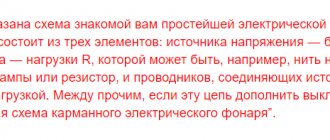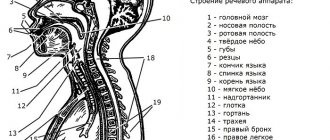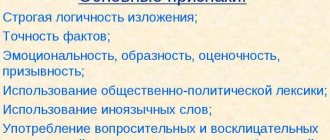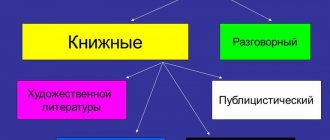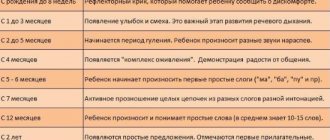- home
- Directories
- Handbook of Russian for elementary school
- Speech and its characteristics
With the help of speech , people communicate with each other, express their thoughts, ask for advice, talk about certain events, convey news and ask questions.
Types of speech:
- oral speech - spoken speech. We pronounce and hear oral speech.
- written speech is speech written down using letters or other signs. We write and read written speech.
These types of speech belong to external speech. External speech is speech addressed to other people.
There is also internal speech - speech that we address to ourselves when we think, dream or reflect on something.
External speech (oral and written) can be in the form of a monologue , dialogue or polylogue:
A monologue is the speech of one person.
Dialogue is the speech of two persons, where they alternately listen and speak to each other.
Polylogue is the speech of several persons.
In dialogue and polylogue, the beginning of each phrase in writing is indicated by a dash. Appeals are used very often.
For example:
- Veronica, have you done your homework yet?
- No, mom, I can’t come up with a story from a picture.
- Don’t be upset, dear, let’s think together.
Any recorded speech is text.
Share with friends on social networks:
General characteristics of speech
A general characteristic of speech is usually given by contrasting it with language (code). R. and language (language system; see Linguistic system) together form a single phenomenon of human language. R. is the embodiment, the realization of language (language system), which reveals itself only in R. and only through it fulfills its communicative purpose. If language is a means of communication, then R. is the type of communication produced by this tool, created by the application of language (code), on the one hand, to specific reality, and on the other, to each time a different communicative situation. R. introduces language into the context of use (see Pragmatics).
R. is material, it consists of articulated signs perceived by the senses (hearing, vision, touch), while language (language system, code) includes abstract analogues of R. units that are formed to distinguish them. and general (integral) features [cf.: speech sound (see Speech sounds) and phoneme]. R. is a sequence of words, it is linear, language introduces hierarchical into this linear sequence. relations, it has a level organization (see Levels of language); R. strives for the merging of words in the speech stream, while language maintains their separateness. R. is classified as an object of reality and can be considered from the point of view of its truth or falsity; truth assessment is not applicable to language. R. is concrete and unique, as opposed to the abstractness and reproducibility of language; it is actual, but language is potential; R. is intentional and directed towards a specific goal, in contrast to the lack of purposefulness of language; R. is contextually and situationally determined; language is independent of the communication situation. Being an event, an action, language unfolds in time and space; it is active and dynamic; language is given in abstraction from these parameters of the world; it is largely passive and static; R. is mobile, the tongue is stable; R. is infinite, the system of language is finite; R. is variable, but language is relatively invariant in each period of its existence. Being a psychophysical phenomenon, R. is subjective and arbitrary, it is a type of free creativity. activity of the individual, while language as a social phenomenon is the property of the society that uses it, it is objective and obligatory (imperative) in relation to the speakers; R. allows elements of the random and disordered, in contrast to language, which is formed by the regular features of its units (see Units of Language) and the relationships between them; R. reflects the experience of the individual, while language, in the system of meanings it expresses, records the experience of the collective.
R. also has parameters that are not directly opposed to individual features of the language. These parameters relate to the way speech activity occurs. Speech activity can take place in two forms - monologue (see Monologue) and dialogical (see Dialogue). The R. process is characterized by a certain tempo, duration, timbre characteristics, degree of volume, and articulation. clarity, emphasis, tone, etc. R. can be characterized by indicating the psychological. the state of the speaker, his communicative task, attitude towards the interlocutor; cf.: excited, sincere, thoughtful, respectful, mocking, etc. speech. It can be the object of aesthetic (stylistic) evaluation; Wed: artistic, poetic, elegant, rude, etc. speech. R. is determined by the characteristics of its semantic content; cf.: meaningful - empty, coherent - incoherent, meaningful - meaningless, etc. speech. A normative (ethical) assessment is applicable to it; Wed: correct, incorrect, distorted speech. R. can be determined by its compliance with the conditions and goals of communication.
One of the main R.'s characteristics are its individual character: it always has an author who conveys in it his thoughts and feelings, for the expression of which he chooses words and sentence structures. The speaker (or writer) relates linguistic nominations to certain objects of reality, giving them verbal meaning, chooses one or another style (manner) of communication and message (familiar, official, respectful, dismissive, etc.), uses the statement as necessary for himself communicative task.
Speech improvisation allows for a certain variation of forms fixed by the language system. In individual deviations of speech lie the origins of linguistic changes that occur when the subjective features of speaking become the property of the linguistic community. Language creates R. and at the same time itself is created in R. “Language is both a tool and a product of speech” (F. de Saussure).
Since R. is used in different social spheres, it adapts to the tasks and conditions of its functioning. Phenomena of R. are typified, forming relatively independent ones. systems - functional styles and individual styles, which are characterized by modifications of the language system itself (its vocabulary and, to a lesser extent, grammar), and speech features (for example, the length of sentences, the degree of semantic completeness, information content, spontaneity or processing, the degree of cliché, the use of figurative means of expression, the admissibility of different interpretations).
The possibilities for varying R., however, are not unlimited: R. must be understood by the addressee, and the key to its perception and interpretation is the language (code) common to the interlocutors. In the process of speech communication, “language acts as a necessary limit of freedom” (E. Koseryu). In a certain sense, “the interests of understanding and speaking are directly opposite” (L. V. Shcherba).
With the help of R., communication occurs between people, following certain social conventions. Communication creates a communicative context in which speech acts are realized. In verbal communication, a number of aspects can be distinguished that correspond to the task set by the speakers: informative, prescriptive (influencing the addressee), expressive (expressing emotions, assessments), interpersonal (regulating relations between interlocutors), etc. These aspects, often co-present in speech, can separate, creating independence. forms of communication - speech genres, different not only in goals, but also in the distribution of roles and communicative interests of the interlocutors, speech tactics, conditions for success, preferred syntax. structures, etc.
R., as one of the types of human social activity, is intertwined with other forms of activity. R. is multifunctional and from this point of view is studied by pragmatics. The approach to speech as a form of activity (see Speech activity) is characteristic of socio- and psycholinguistics. studies studying the processes and mechanisms of speech formation, the occurrence of speech errors and disorders, the relationship of speech actions to other types of human social activity (works by N. I. Zhinkin, A. R. Luria, A. N. Leontiev, A. A. Leontiev and etc.), the role of R. in the formation of consciousness and manifestations of the subconscious, inner speech, processes of development of children's speech, etc. (see Neurolinguistics, Sociolinguistics, Psycholinguistics).
R. is considered as a type of conscious and purposeful activity also in the concept of linguistic philosophy, within the framework of which the theory of speech acts in its modern form was formed. versions (works by J. Austin, J. Searle, etc.).
Duration of speech for coursework
The guidelines say that speech should not exceed 7-10 minutes. To prevent it from being too short or long, we recommend using the following step-by-step instructions:
- Write down on a piece of paper all the points from the structure of the speech (see above). This will be the finished plan for your speech.
- Create a presentation using a ready-made plan.
- Record your performance time and adjust up or down.
Break the presentation text into information blocks. Based on them, you will get cards for your speech.
Follow the rule: 1 card - 1 presentation slide.
Each card should contain slightly more detailed information based on the data from the slide: important dates and numbers, names, results and conclusions. Such cheat sheets will help you not to overload your memory with technical issues and maintain a strict sequence of the story.
But the main part of the speech will have to be learned by heart. However, this will not be difficult to do if the student independently conducted research and wrote the coursework.
A defense speech always follows the same pattern: greeting, main part, conclusions and conclusion. Let's take a closer look at each stage.
How to start a speech to defend a course work
In the greeting, the student introduces himself and his project to the audience.
The opening speech for the defense of the course work must contain the following information:
- greeting those gathered,
- Name and course of the student,
- position and full name of the course supervisor,
- course topic,
- relevance of the chosen problem,
- the degree of its study,
- formulation of the object and subject of research,
- listing the goals and objectives of the work.
Depending on the interests of the commission, its members may ask to dwell in more detail on some point or, conversely, to speed up and move on to the main part.
An example of figures of speech for defending a coursework
If you don’t know how to make a speech to defend a coursework, here are some popular phrases that are often used during a speech. The entire report can be built on the basis of these phrases.
- “Hello, dear members of the examination committee! My name is (full name), I am a student of the _ course. My supervisor became (full name and position of the teacher). The topic of the course work is (specify topic).”
- “The relevance of this work is due to...”.
- “To achieve the goal, the following tasks were set...”
- “The course project is based on last year’s research” - for students who have been conducting scientific research on a given topic for several years in a row.
- “When studying the theoretical basis, we were able to draw the following conclusions...(list).”
- “During practical/research activities it was established...(listed)”;
- “The result of the course project was ... (list)”;
- “In accordance with the purpose and objectives set in the work, the following conclusions can be drawn...”
- “We plan to use the results of these studies for further development of the topic” - after announcing the conclusions about the work done.
- “This concludes my speech. Thank you for attention!"
What to say in the main part of a coursework defense
Here the student lists the research methods he used to obtain data, and also describes the research activity itself, the difficulties and problems he encountered.
The author describes in detail both the theoretical and practical parts of the work: how surveys were conducted, market monitoring, product development, drawing up tables, charts, drawings - all this is described in detail by slides and handouts during the defense speech.
On a note!
Consider what information from your report will be difficult to comprehend by ear. It is better to present all tables, drawings, graphs, diagrams to the members of the commission in the form of handouts. Make sure there are enough copies for everyone.
Advice for students before defense
- Be sure to rehearse your prepared speech in front of a mirror . Read aloud, study the pose in which you look most advantageous.
- Use a stopwatch while reading the speech. If, when reading at a calm pace, the speech takes longer than 7-10 minutes, think about how to shorten it. A speech that is too short may raise additional questions. If you don’t want this, think about how you can dilute the performance.
- No false modesty . If you made a major contribution to the research during the course of the study, be sure to talk about it during your presentation.
- Study the report . All information presented in it must be concise and consistent. To do this, strictly follow the structure of your speech.
- Pay attention to appearance . The more respectable you look, the more seriously the commission members will take you.
- Get enough sleep before your defense . A fresh, rested head orients itself better and reacts faster.
- Rehearse your report thoroughly so that there are no filler words in it. They tell listeners that the speech is spontaneous and poorly prepared.
Take seriously the preparation of a speech to defend your coursework. Otherwise, weeks and even months of hard work will not receive proper appreciation. We wish you good luck and hope that our information will help in your preparation.
